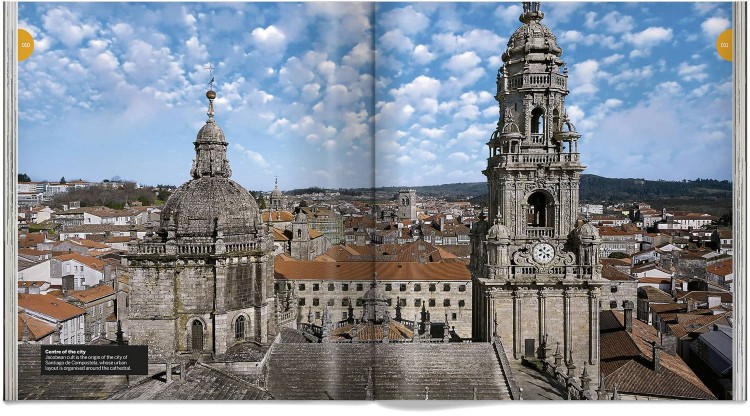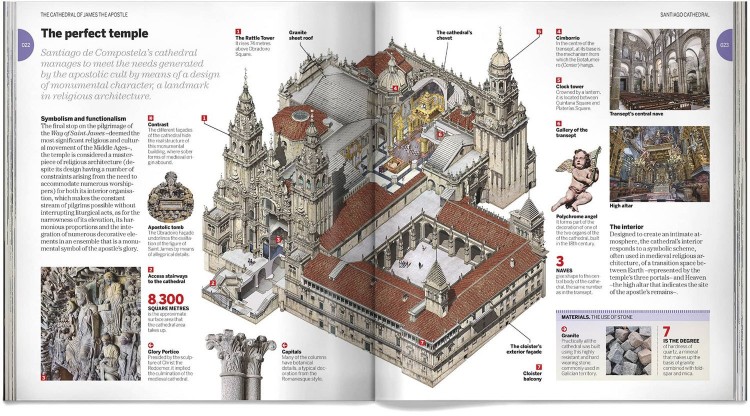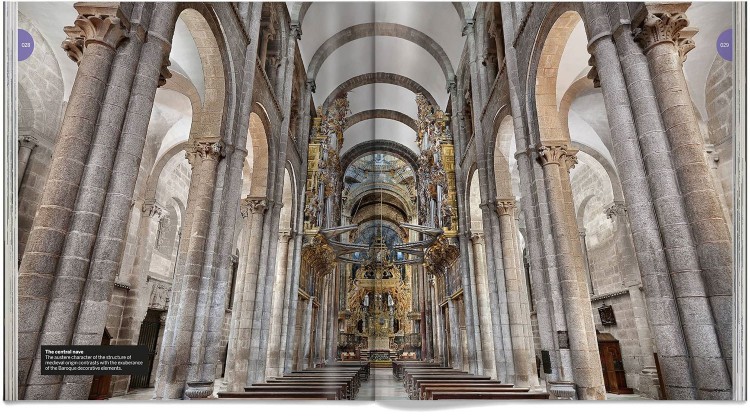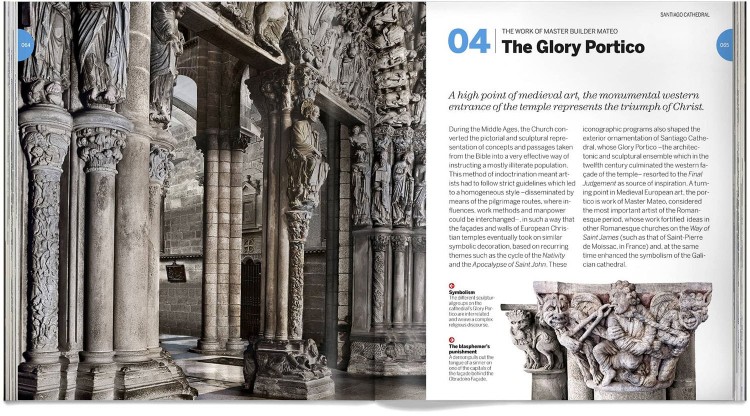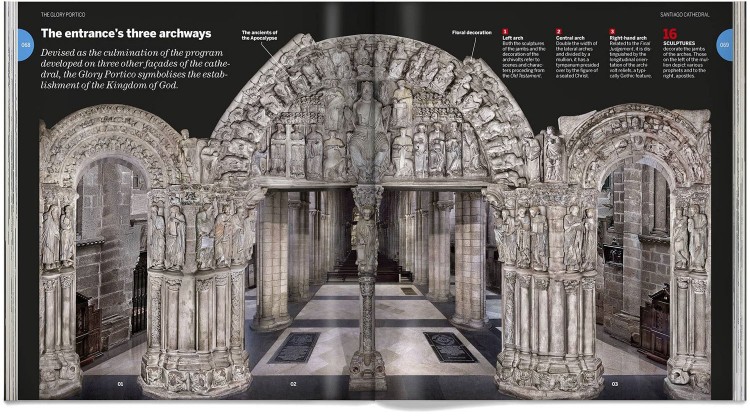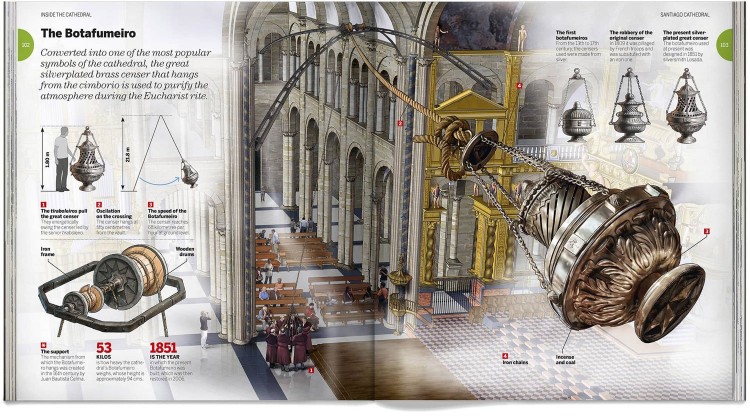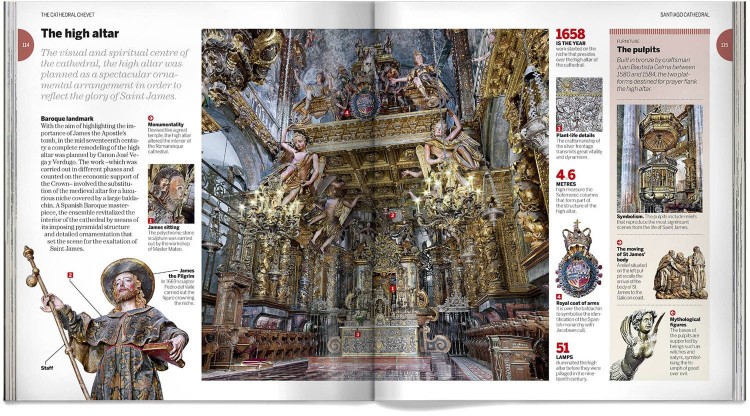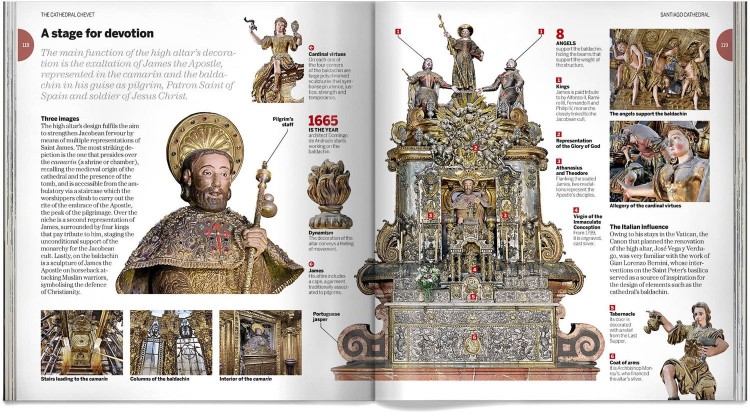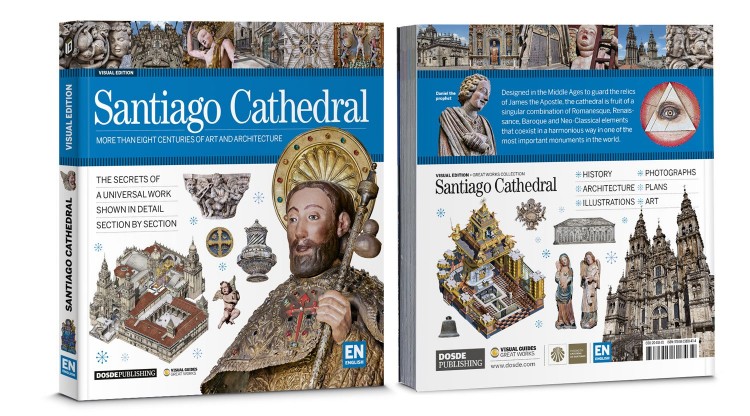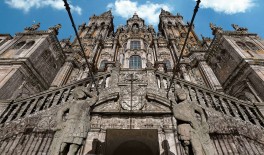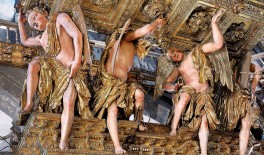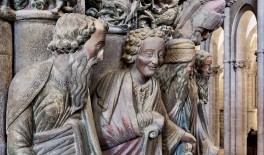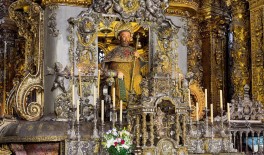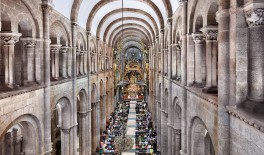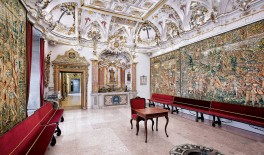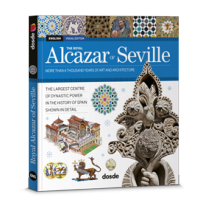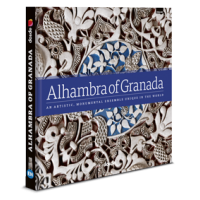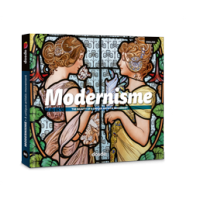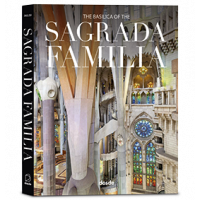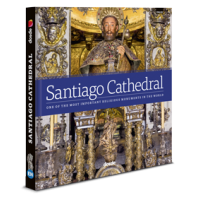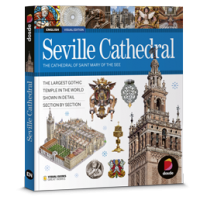Santiago Cathedral
More than eight centuries of art and architecture
RETURN
About the book Santiago Cathedral
Designed in the Middle Ages to hold the relics of the apostle Saint James (Santiago), one of the most important figures of Christianity, the Cathedral of Santiago de Compostela is a masterpiece of religious architecture. The long history of the temple, which spans more than eight centuries, is reflected by the presence of elements pertaining to diverse artistic styles, such as the Romanesque, the Renaissance, the Baroque and Neo-Classicism.
To its architectonic and artistic legacy, Santiago Cathedral also boasts a great symbolic value, given that the monument is, since its origins one of the world's main centres of pilgrimage. This fact has determined the design of the temple, which combines functionalism and symbolism with the aim to facilitate the combination of liturgical rites with the constant flow of visitors.
This book about the Cathedral of Santiago de Compostela, published by Dosde, goes into all the aspects that have converted it into a architectural landmark, exploring questions such as the origin of the worship of James the Apostle, the temple's structural evolution and the significance of its iconographic programme.
To its architectonic and artistic legacy, Santiago Cathedral also boasts a great symbolic value, given that the monument is, since its origins one of the world's main centres of pilgrimage. This fact has determined the design of the temple, which combines functionalism and symbolism with the aim to facilitate the combination of liturgical rites with the constant flow of visitors.
This book about the Cathedral of Santiago de Compostela, published by Dosde, goes into all the aspects that have converted it into a architectural landmark, exploring questions such as the origin of the worship of James the Apostle, the temple's structural evolution and the significance of its iconographic programme.
Visual Edition
Santiago Cathedral
It includes exclusive digital content
Official licensed product
Made with environmentally friendly paper
Multilanguage: Available in 9 languages
About the book Santiago Cathedral
Designed in the Middle Ages to hold the relics of the apostle Saint James (Santiago), one of the most important figures of Christianity, the Cathedral of Santiago de Compostela is a masterpiece of religious architecture. The long history of the temple, which spans more than eight centuries, is reflected by the presence of elements pertaining to diverse artistic styles, such as the Romanesque, the Renaissance, the Baroque and Neo-Classicism.
To its architectonic and artistic legacy, Santiago Cathedral also boasts a great symbolic value, given that the monument is, since its origins one of the world's main centres of pilgrimage. This fact has determined the design of the temple, which combines functionalism and symbolism with the aim to facilitate the combination of liturgical rites with the constant flow of visitors.
This book about the Cathedral of Santiago de Compostela, published by Dosde, goes into all the aspects that have converted it into a architectural landmark, exploring questions such as the origin of the worship of James the Apostle, the temple's structural evolution and the significance of its iconographic programme.
To its architectonic and artistic legacy, Santiago Cathedral also boasts a great symbolic value, given that the monument is, since its origins one of the world's main centres of pilgrimage. This fact has determined the design of the temple, which combines functionalism and symbolism with the aim to facilitate the combination of liturgical rites with the constant flow of visitors.
This book about the Cathedral of Santiago de Compostela, published by Dosde, goes into all the aspects that have converted it into a architectural landmark, exploring questions such as the origin of the worship of James the Apostle, the temple's structural evolution and the significance of its iconographic programme.
Videos Santiago Cathedral
Readers opinions
(1)
Readers opinions
(1)
It covered all my needs, it was the book I was looking for.
Additional Information
- Additional Information
- Subtitle: More than eight centuries of art and architecture
- Weight (g): 470
- Binding: Paperback with flaps
- Size (cm): 17,5 x 19,5
- Author: Dosde
- Pages: 0
- Edition: Visual Edition
The history of Santiago Cathedral
In the eighth century most of the Iberian Peninsula was under Muslim rule. The Christian pockets of resistance against the invader were concentrated in the north of Spain, where the Kingdom of Asturias began a land annexation process that allowed it to extend its borders. Moreover, religion provided a symbolic meaning to this reconquest policy of the Asturian monarchs, who contributed to the development of an episcopal network.
From the bishopric of Iria Flavia (close to present day Santiago de Compostela) came the news of the discovery of a mausoleum that held the remains of James the Greater, one of Jesus Christ’s apostles. A church was built to protect his relics, quickly replaced by a larger one that was able to respond to the early pilgrimages and underpin the cohesion of the territory. However, the increasing enthusiasm for the Jacobean cult meant the design of the temple had to correspond with the importance of the relics. And by 1075 construction work started on the Cathedral of Santiago de Compostela to protect the apostle’s relics.
Despite its remote location, the apostle’s tomb soon attracted pilgrims from all over Europe, in such a way that different routes were devised which were equipped with specific guest houses and hospitals. Nowadays, each year thousands of pilgrims go on the Camino de Santiago strengthening the importance of these routes.
The temple supposed the peak of Romanesque architecture: the ground plan of Santiago Cathedral adopted a Latin cross ground plan, formed by two arms of three naves each and an ambulatory that went around the high altar. However, the balance of the medieval building was rapidly altered by a series of refurbishments between the 17th and 18th centuries which involved significant variations both on the exterior as well as the interior of the temple.
Developed intermittently and with no master plan, these renovations made possible the introduction of features belonging to Renaissance, Baroque and neo-Classical styles in a cathedral that, at the same time, became the reflection of the ideological evolution of the institutions involved in its operation.
From the bishopric of Iria Flavia (close to present day Santiago de Compostela) came the news of the discovery of a mausoleum that held the remains of James the Greater, one of Jesus Christ’s apostles. A church was built to protect his relics, quickly replaced by a larger one that was able to respond to the early pilgrimages and underpin the cohesion of the territory. However, the increasing enthusiasm for the Jacobean cult meant the design of the temple had to correspond with the importance of the relics. And by 1075 construction work started on the Cathedral of Santiago de Compostela to protect the apostle’s relics.
Despite its remote location, the apostle’s tomb soon attracted pilgrims from all over Europe, in such a way that different routes were devised which were equipped with specific guest houses and hospitals. Nowadays, each year thousands of pilgrims go on the Camino de Santiago strengthening the importance of these routes.
Santiago Cathedral's architectonic styles
Designed in the Middle Ages according to the canons of Romanesque architecture, the Cathedral of Santiago de Compostela has undergone numerous renovations conditioned by the trends prevailing in each period.The temple supposed the peak of Romanesque architecture: the ground plan of Santiago Cathedral adopted a Latin cross ground plan, formed by two arms of three naves each and an ambulatory that went around the high altar. However, the balance of the medieval building was rapidly altered by a series of refurbishments between the 17th and 18th centuries which involved significant variations both on the exterior as well as the interior of the temple.
Developed intermittently and with no master plan, these renovations made possible the introduction of features belonging to Renaissance, Baroque and neo-Classical styles in a cathedral that, at the same time, became the reflection of the ideological evolution of the institutions involved in its operation.

